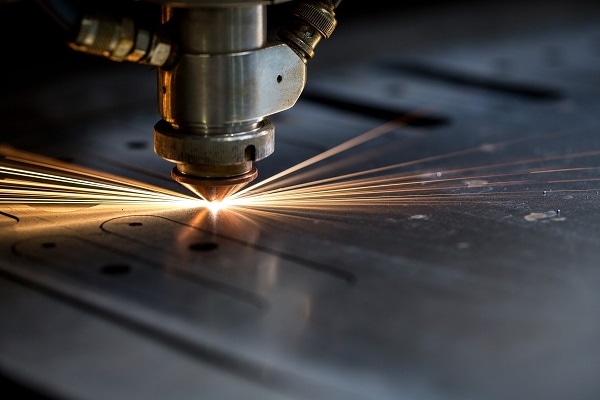Apr 6 2017
A group of chemists are working to develop an innovative laser-based method for finding out hidden damages to metals. The method will enable the investigation of the structural integrity of a ship, airplane, or bridge, without the need for dismantling it or for detaching any material for testing, which might further weaken the structure.

Guryanoy Andrey/Shutterstock
The outcomes of the research were presented by the researchers on April 5 at the 253rd National Meeting & Exposition of the American Chemical Society (ACS), the world’s largest scientific society. The meeting features over 14,000 presentations on a wide array of scientific subjects.
Metals are often subjected to mechanical stress or fatigue that can weaken them structurally, but you can’t tell that just by looking at them.
James E. Patterson, PhD.
One real-world example of this is a U.S. Air Force plane that accidentally turned upside down during flight, a feat it wasn't designed for. According to Patterson, the stress tolerance specifications of the plane were exceeded during the exercise. However, investigations as to whether the unintentional inversion really damaged any components—that might end up in crashing of the plane in a subsequent flight—could not be made. Therefore, the whole highly expensive plane had to be destroyed.
“That’s where nondestructive testing comes in,” stated Patterson from the Brigham Young University. Commonly known as NDT, this technique contributes to a billion-dollar industry, Patterson indicated. Prevalent methods for testing materials without damaging comprise of X-ray imaging with the ability to detect microscopic cracks in metals. However, the technique mandates safeguarding from the X-rays, is costly to carry out, and is difficult to adapt for field applications. Patterson added that alternative NDT methods provide equivocal outcomes and need highly trained technicians.
As a substitute, Patterson and his colleagues rely on a spectroscopic technique called second harmonic generation (SHG). SHG has the ability to change the wavelength of light. Shawn Averett, Patterson’s graduate student, perceived that the method can be adapted to investigate internal damage in metals. Averett along with undergraduate students Scott D. Smith and Alex Farnsworth are collaborating with Patterson on the study.
The researchers started by irradiating a metal sample with green laser light. By means of SHG, the metal transforms a portion of the incoming light into ultraviolet light. The ultraviolet light bounces back from the metal together with the remnant green light.
The amount of conversion depends on the properties of the metal, and if those properties have been changed by some form of stress, we can detect that in the converted light.
Patterson.
Investigations conducted till date show that the method has the ability to differentiate unaffected metal parts from the irreversibly damaged metal parts that ought to be replaced. The research team indicates that their technique is highly sensitive when compared to prevalent NDT methods and hence has the ability to provide prior warning related to risks.
According to Patterson, when subjected to more perfection, the technique can find usage in the aerospace industry in which various parts of the plane are regularly replaced after specific usage time to prevent disastrous failures. The schedule for replacement depends on the average performance of various similar components, instead of the original condition of the individual component. The SHG technique can also be applied to investigate whether a specific component is actually damaged or still has useful work life, thus saving time, material, and money.
Patterson and his colleagues are also investigating for applications in the U.S. Navy. The magnesium/aluminum alloy applied in Navy vessels can be invisibly corroded, which might lead to drastic outcomes.
There are stories of someone walking along a metal deck and stepping in the wrong spot, and a big chunk falling through to the deck below. Cracks also form in walls. And once visible cracks form, it’s often too late to reverse the damage.
Patterson
The researchers believe that their method can be developed into a portable system with the ability to test whether a scanned object is in a better condition.
In principle, you could go around with a wand and some fiber optics and scan large areas of a ship for hidden damage.
Patterson.
The technique can be applied to investigate various potential structures such as building components, oil pipelines, and bridges.